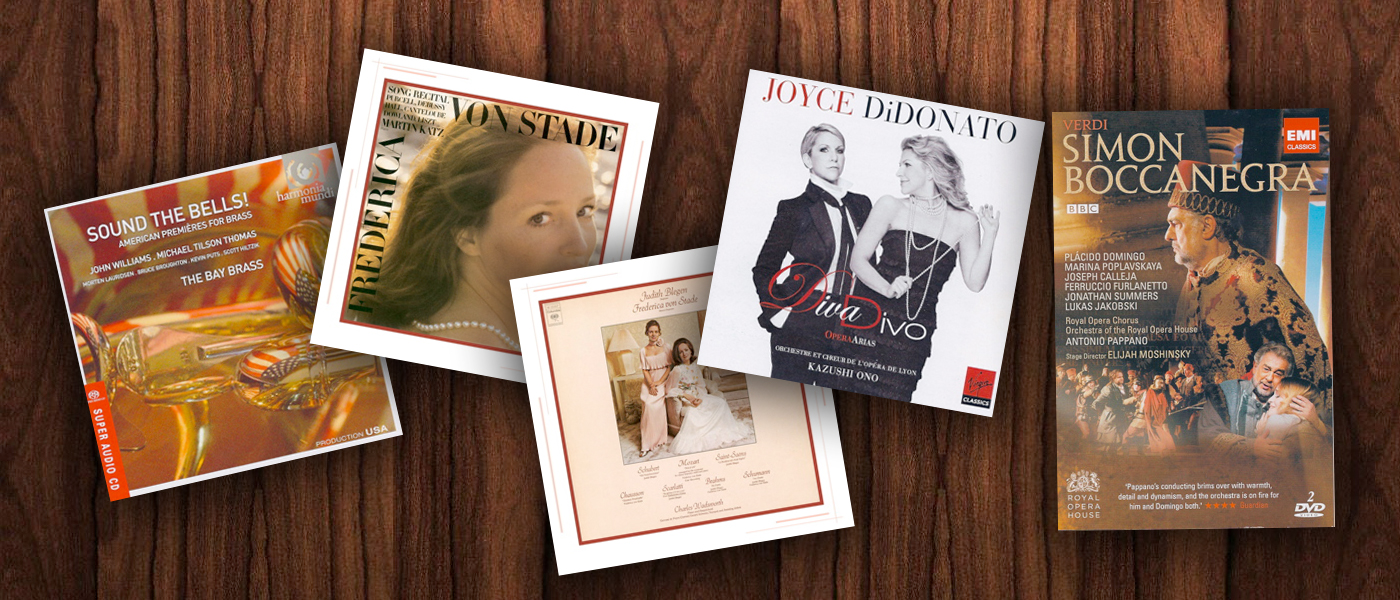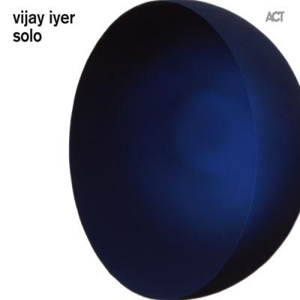
Vijay Iyer Solo ACT Music + Vision 9497-2
- Performance:

- Sonics:

The term “jazz†begins to lose meaning when applied to creations as brilliant as this. Iyer’s music transcends genres as it takes us on an oft-mesmerizing journey into the heart and mind of an extremely gifted musician. In “Autoscopy,†chords churn in ways that seem more connected to new music than jazz. The jazz element may be more recognizable in the relentless riffs of “Patterns,†but elements constantly change and shift in the 11 excursions on Solo in ways that transcend categories and labels. No wonder Iyer has also received commissions from the American Composers Orchestra, wind quintet Imani Winds, and new music quartet Ethel.
I didn’t know much about pianist Vijay Iyer when I started listening to that CD, but I was so captivated by the layers and depth of his playing, and his unique interweaving of driving rhythm with melody and harmony that I had to go to his website to learn more about him.
There I discovered that Historicity, Iyer’s recent recording with his trio, was nominated for the 2010 Grammy for Best Jazz Instrumental Album. Not only that, but Solo has already been named among the Top 10 Jazz Albums of 2010 in the JazzTimes critics’ poll, the Village Voice critics’ poll, Popmatters, the Los Angeles Times, the Chicago Tribune, and the Detroit Metro Times.
Iyer was also named 2010 Musician of the Year in the Jazz Journalists Association Annual Jazz Awards. The award, which comes six years after the association named him Up & Coming Musician of the Year. In addition, he has often come out on top in multiple categories of the Downbeat Magazine International Critics’ Poll.
The patterns Iyer weaves on his piano reflect his background. Equipped with a B.S. in Mathematics and Physics from Yale College, and a Masters in Physics and an interdisciplinary Ph.D. in Technology and the Arts from the University of California at Berkeley, Iyer was chosen as one of nine “Revolutionary Minds” in the science magazine Seed. In addition to teaching on the faculty of at Manhattan School of Music, New York University, and The New School, he has presented master classes and lectured at the alifornia Institute of the Arts, Columbia University, Harvard University, Berklee School of Music, several University of California campuses, and the School for Improvisational Music, among others. The list of publications that have carried his writing is equally impressive.
The genesis of the recording mirrors Iyer’s bi-coastal compass. Solo was mastered at Turtle Tone Studios in New York City by Mike Fossenkemper, and engineered and co-produced by five-time Grammy-nominated engineer Cookie Marenco at her OTR Studios in Belmont, CA. The beauty and clarity of Marenco’s extended sound environment (e.s.e.) recording, captured on 2†tape, then mixed down to DSD using custom silver-copper cable, is an audiophile’s delight. Iyer’s playing is even more than that. Don’t miss this album.
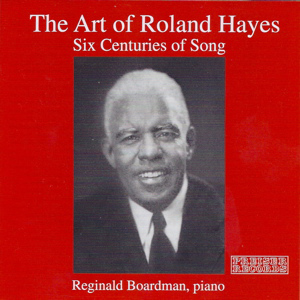
The Art of Roland Hayes Six Centuries of Song Preiser Records 93462
- Performance:

- Sonics:

Lyric tenor and composer Roland Hayes (1887-1977) may be the most important “Aframerican†(his term) classical singer of the 20th century that you don’t know about. Part of his obscurity is due to the curse of racism. Although Hayes made a successful, self-produced recital debut in Boston Symphony Hall in 1917, the roadblocks to success faced by what we now term Black artists led him to sail to Europe, where he made a successful debut in 1920. Two years later, a triumph in London’s Wigmore Hall led to an invitation from King George V and Queen Mary to sing at Buckminster Palace.
After continuing his vocal studies with a number of teachers, including Maurice Ravel, Hayes returned to the United States. This time, both Boston Symphony Hall and Carnegie Hall welcomed him with open arms. By 1924 he was singing more than 80 concerts a year. Dubbed the “Black Caruso,†he was able to sell out the Hollywood Bowl as well as Wigmore Hall and Covent Garden.
With the opera house closed to him, Hayes’ success in the United States was never complete. In 1931, he demanded that the audience at his Constitution Hall recital be desegregated. Although white audience members refused to change seats, and the concert continued, the incident led the hall’s management to institute a “white artists only†policy. Thus the stage was set for contralto Marian Anderson’s famed 1939 run-in with the Daughters of the American Revolution, who refused to let her sing in Constitution Hall. At the invitation of First Lady Eleanor Roosevelt, Anderson subsequently performed on the steps of the Lincoln Memorial.
Anderson has credited Hayes’ singing as a major inspiration for her career. She is not alone. The great William Warfield, who for a time was married to Leontyne Price, recounts a conversation with the elder Hayes in which he said, “I started all this… Now, you can’t stop where I stopped; you’ve got to go on.â€
For invaluable insights into Hayes’ career and legacy, I recommend the mp3 of a recent short talk by Christopher Brooks, who is writing a biography of Hayes http://chemp3.com/download/816351/roland-hayes-a-recording-legacy-considered-christo
Other information may be found at:
- http://www.georgiaencyclopedia.com/nge/Article.jsp?id=h-1671
- http://www.afrovoices.com/rhayes.html
- http://en.wikipedia.org/wiki/Roland_Hayes
- http://www.bookrags.com/biography/roland-hayes/
Despite his fame, Hayes made relatively few recordings in his prime. Some early tracks can be found in compromised mp3 form at various sites on the web. Among the best are fragments from 1911, when he sang second tenor with the Fiske Jubilee Singers; one from 1919, where he sings a surprisingly credible, albeit light voiced lyric tenor version of “Vesti la giubba†from Leoncavallo’s I Pagliacci; and at least one clip on YouTube.
The only CD currently available is Preiser Records’ 2-disc set, The Art of Roland Hayes: Six Centuries of Song. Consisting of 57 selections, originally released in 1953 and 1954, the recordings range from Old English Folksongs, Dowland, Handel, Mozart, Schubert, Debussy, and Wolf to Hayes’ arrangements of “Aframerican†folksongs, Negro worksongs, and spirituals. Though some are unaccompanied, most feature the pianism of Reginald Boardman.
Despite the beauty of the voice, there is no getting around the fact that, especially higher in the range, age has taken its toll on Hayes’ instrument. Nor, despite exemplary diction, are the French and German even remotely idiomatic.
Yet Hayes’ artistry remains intact. Listen, for example, to the way he caresses phrases in Dowland’s “Come again, Sweet Love, doth now invite.†The phrasing and accents are hardly what we would consider authentic, but the sensitivity to meaning and intention are supreme. The voice, too, is at its honeyed best. It’s a wonderful performance.
Spirituals are vigorously and convincingly sung, with the unaccompanied “Sometimes I feel like a motherless child†so deeply felt that it could tear your heart apart. From great performances such as these, we can begin to imagine the tremendous impact Hayes made when his voice was at its peak. This review initially appeared at sfcv.org, the website of San Francisco Classical Voice.
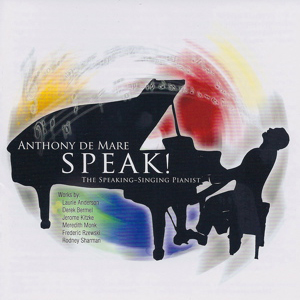
Anthony de Mare Speak! Innova 241
- Performance:

- Sonics:

On first listen, someone unfamiliar with the art of New York-based “speaking/singing pianist†Anthony de Mare might ask, “Is this guy nuts?†Beginning the first track of a compilation of music written or arranged specifically for his talents with the line, “There is a story to tell,†seems reasonable enough. But those odd beats on the piano, wild cries, whoops, slaps, heavy breaths, hollers and hiccups, and New York-accented Indian vocalizations? Could composer Jerome Kitzke have possibly envisioned such an unbridled response to the personal text with which he framed his setting of Allen Ginsberg’s great Sunflower Sutra (1999)?
As it turns out, he did. When Kitzke first heard de Mare perform the New York premiere of Frederic Rzewski’s setting of Oscar Wilde’s De Profundis (1992) at the 1995 Bang on a Can marathon in Alice Tully Hall at Lincoln Center, he was blown away. “From a pure performance standpoint,†he says, “I thought he had done a piece of incredibly magical one-person theater at the piano. This is not a new notion; lots of performers sing and play and create little bits of theatre at the piano. But Tony creates a complete piece of theater. He is not just an artist and performer; he thinks like a theatrical person, which makes him just perfect for pieces like De Profundis and Sunflower Sutra that convey the full range of human emotions.â€
Anthony de Mare man pioneered the genre of speaking/singing pianist, and remains its supreme master. Speak! contains three pieces written expressly for him: the aforementioned works by Kitzke and Rzewski, and Rodney Sharman’s The Garden (2001). Also on the CD are Derek Bermel’s extremely touching Fetch (2004), Meredith Monk’s urban march (shadow) (2001), and an adaptation of Laurie Anderson’s Statue of Liberty (2001).
Sharman’s The Garden sets a libretto by Peter Eliot Weiss. “I’ve written a lot of music for Tony,†says Sharman. “This was written at his request with a gay theme. I didn’t want to write about AIDS – I’d already written three memorial pieces – or about coming out. Tony said he was so relieved, because those are the standard gay literary subjects that are done constantly.
The Garden is about a man’s first visit to a gay club known for its dark backyard meeting space, and the bliss that ensues.
“Tony has performed it about a dozen times,†says Sharman. “He did an amazing performance as part of the Art & Activism: Contemporary LGBT Art and Protest series at Lincoln Center in 2006. Rzewski was also there, and we spoke together on a panel. I shared how Tony’s abilities take me to places as an artist where I otherwise would never go. The piece is truly inspired by his talents; he becomes the fictional characters, and becomes the tenderness. Frederic said that listening to this piece was like listening to a radio play that draws you in and seems to speak to you one-on-one.â€
That is the essence of de Mare’s genius as a speaking/singing pianist. As he performs music that speaks of love, doubt, and self-acceptance, he addresses and nurtures the shared heart that binds us together in the most difficult of times. Speak! is an amazing disc.
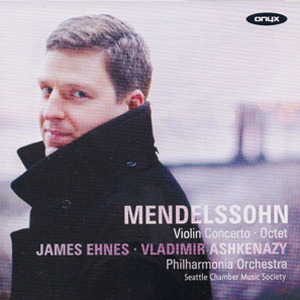
Felix Mendelssohn Violin Concerto in E minor / Octet in E flat • James Ehnes, Vladimir Ashkenazy, Philarmonia Orchestra, Seattle Chamber Music Society Onyx 4060
- Performance:

- Sonics:

If a romantic violin concerto more perfect than Mendelssohn’s Violin Concerto in E minor, Op. 64 exists, I don’t know of it. The precocious composer’s final orchestral composition, completed when he was 35, brims over with enrapturing melodies, thrilling virtuosic passagework, and irresistible romantic sweep. Once heard, it’s a bit like taking a bit of your favorite dessert – all you want is more. Except that Mendelssohn’s treat is a meal in itself, one that feeds the spirit rather than widening the waistline.
I know the work well. Violinist David Oistrakh’s recording of the concerto, accompanied by the Philadelphia Orchestra under Eugene Ormandy; Tchaikovsky’s Piano Concerto No. 1; Prokofiev’s Peter and the Wolf; the voices of Enrico Caruso, Luisa Tetrazinni, and Amelita Galli-Curci; and the Broadway soundtracks to Finian’s Rainbow, South Pacific, and Annie Get Your Gun surrounded me as a child. I have numerous recordings of the work, each of which speaks to me differently. But none sound like this one.
Violinist James Ehnes, who has already won a Gramophone Award for his recording of Elgar’s Violin Concerto, turns in an extraordinarily compelling performance. In the middle of his violin’s beautiful soaring sound lies a heartfelt core. It’s a very special sound, one that communicates deeply upon first hearing.
Encouraged by conductor Vladimir Ashkenazy and England’s fabled Philharmonia Orchestra, Ehnes infuses his innate lyricism with a romantic passion and tension seldom encountered in renditions of this work. To Ashkenazy’s surprisingly dark introduction, he initially brings out the tragic side of Mendelssohn’s writing. The first transition to light-filled lyricism is magical – it’s as if Ehnes and Ashkenazy were lifting the veil of darkness, allowing the sweet light of spring to shine through. The dramatic contrasts in the first movement’s unaccompanied cadenza are no less amazing, the passagework remarkably fluent.
The heartfelt second movement is equally gripping, especially when Ehnes contrasts passages of sweet longing with graver utterances that express the pain of loss. And as breathtakingly fast as the final movement may be, the eloquent partnership of Ehnes and Ashkenazy again manages to bring out a host of dramatic accents that add meaning to the zip. The performance is a joy.
Mendelssohn wrote the concerto for his friend Ferdinand David, leader of the Leipzig Gewandhaus Orchestra. Many passages were worked out together, even after the work had been submitted for publication. By the time David gave the premiere with the Leipzig Gewandhaus Orchestra in Marh 1845, it had very much become his own.
The remainder of the disc is devoted to Mendelssohn’s exhilarating youthful octet. Written when he was 16, it is played by members of the Seattle Chamber Music Society. Although Ehnes’ violin often dominates, many of the other players are winners of international competitions and are more than capable of holding their own. All in all, a fabulous disc.
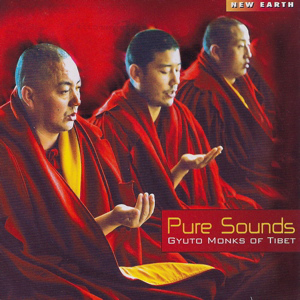
Gyuto Monks of Tibet Pure Sounds New Earth Records NE 3106
- Performance:

- Sonics:

Famed for their deep overtone chanting and meticulously constructed, intentionally impermanent sand mandalas, the Gyuto Monks of Tibet practice and maintain an ancient spiritual practice of achieving peace and enlightenment through mindful repetition. Currently living in India, they are the descendants of the original monks of Gyuto Tantric University, in Lhasa, Tibet. Founded in 1474 or 1475, the university until 1959 served as a center of Tibetan Buddhist tantric meditation, devotion, spiritual enfoldment, and ancient knowledge.
After the Chinese occupiers of Tibet desecrated their Ramoche temple and killed most of the 900 monks, 60 survivors followed their spiritual leader, the 14th Dalai Lama, into exile. They resettled in New Ramoche Temple in Dharamsala, India. There they continue to practice alongside the Dalai Lama. The monks’ numbers have now expanded to 500, with a host of young monks providing some assurance in unstable times that the lineage will continue.
Each monk is capable of chanting in three octaves at once. Their lowest sounds, which might provoke jealousy in the darkest of Russian basses, interweave with others to create deep, healing resonances in body, mind, and spirit. The extra sounds created by overtone chanting, which emerge occasionally on the CD, are extraordinary.
In order to raise funds necessary to feed and house themselves in exile, the monks have taken their show on the road, as it were, performing what are essentially private, inwardly contemplative ceremonies in public places and on CD. On one level, their ceremonies qualify as spectacles. Bedecked in bright, saffron colored robes and huge, oversized headdresses, the monks specialize in a rare form of multi-phonic chanting, previously unheard in the West, in which the deepest tones possible from the human throat are joined by one or more higher, equally resonant overtones simultaneously created by the same person. Some of the monks sometimes play huge horns made from brass or human bones, or use large antlers to strike massive gongs suspended behind them. And when they are able to remain in one location for days on end, they spend the time they do not to devote to chanting to creating strikingly beautiful, elaborate butter or sand sculptures which they summarily destroy upon completion.
This recording, nominated for a Grammy for Best Traditional World Music Album, was recorded in Mullumbimby, NSW, Australia for Gyuto House Australia and New Earth Records. Little documentation is provided, because the vibrations of the chants — recitations of the Buddha’s teaching — ultimately transcend language. The CD consists of six tracks, the longest of which is 23:16. Some chants are solo, others performed by a small group of monks. The voices are gravely, the deepest tones blending with higher overtones to form a dense yet transparent blanket of healing sound. Dissonance becomes consonance, as the final chant, “Dalai Lama Long Life,†seems to merge like a spiral vortex with the timeless cycle of birth, death, and rebirth.


